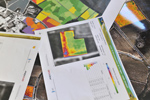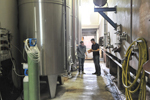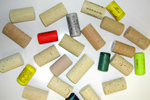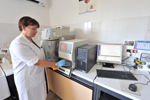
Associate wineries for R&D

The Group of R&D Partners wineries was established under the leadership of the ICV in 2005.
The objective: to support the development of new tools for winemaking, to transfer to the industrial scale the results of the Experimental Cellar.
Show Associate wineries on a larger map
On the basis of an annual work program, the ICV Group conducts regular meetings between these wineries, all from the Mediterranean basin and the Rhone Valley. On the agenda: sharing results, experiences, innovation on each balance sheet (assets and limits) to validate its interest leads for years to come.
This network is a key link between applied research and production: it measures on the ground, the benefits and limitations of innovations in close partnership with stakeholders in the sector.
The results of the actions are then relayed by the ICV teams from all 2,000 members and customers of the Group.
Innovations
Some innovations validated and implemented with partner cellars:
 |
Satellite remote sensing (2006 and 2007): tests before creating the service Oenoview® For cooperatives: quick and objective assessment of the oenological potential of several thousand plots, grouping like-potential lots. For investors: precise and rapid analysis of wine production potential new plots and new areas. |
 |
Breeding without SO2 on white, rosé and red (2007-2010): validation of feasibility, risk identification, development steering the microoxygenation red. |
 |
Caps and sensory profiles of wines (2007-2010): conservation wines by 3 technical corks DIAM of different permeability over a period of 36 months. Test repeated in 4 partners or cellars of 2 red wines, 1 rosé wine and one white wine to measure the influence on permeability changes in sensory profiles of wines and chemical characteristics. Benefits: choose capping (cap and permeability) best suited to the preservation and evolution of sensory profiles of wines, aware of the influence of clogging on the sensory profiles of wines. |
 |
Biogenic amines and FML (2008): identification of major 'hot spots'' in the winemaking process, highlighting the raw material effect. |
 |
Original profiles Research Viognier (2010): very different process layout for comparison, from the same raw material, different wine styles. Benefits: possibility to produce original, creative cuvées for recovery or assembly as such. |
Other examples of experiments implemented:
Oxygen in the pre-fermentation phases
Biogenic amines and FML
Organic nitrogen in fermentation
Vinification of white grapes in short maceration
